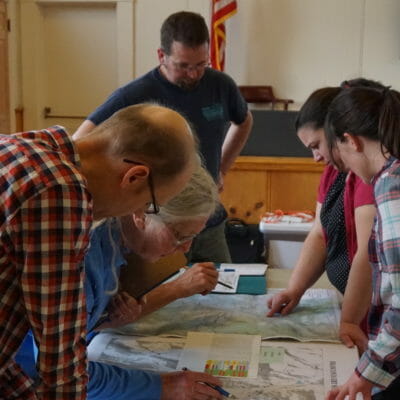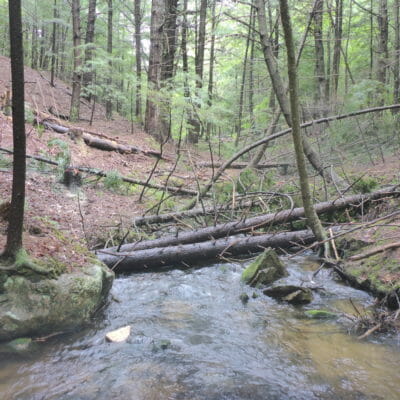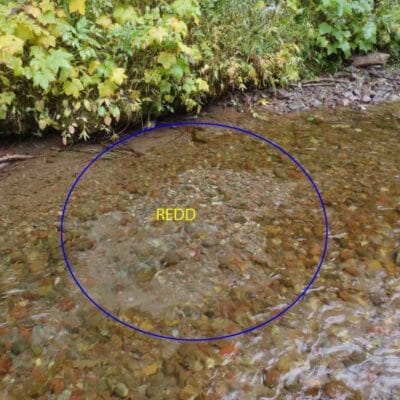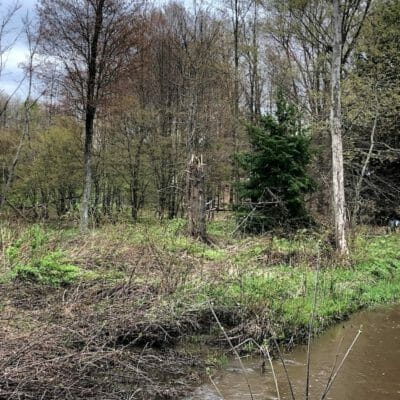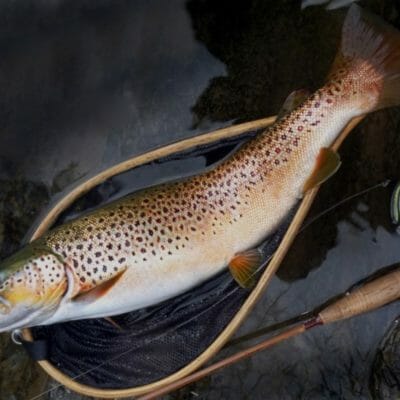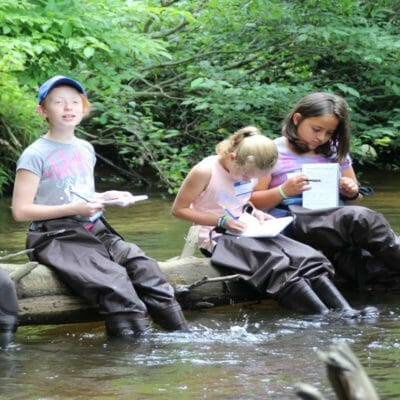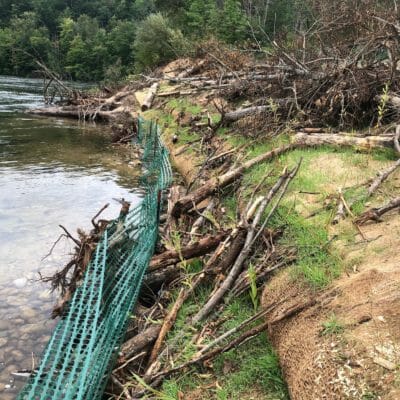By Joel DeStasio Trout Unlimited continues to build upon our successful series of community flood resiliency workshops in New Hampshire, engaging local decision-makers, such as Selectboard, Department of Public Works and Conservation Commission members, on identifying and restoring critical infrastructure. During this recent series of workshops, TU successfully worked with an additional 23 communities across the Granite State, increasing awareness of infrastructure risk and vulnerability while at the same time educating stakeholders on how to…
By Joel DeStasio During the 2019 summer field season, Trout Unlimited field staff completed strategic wood addition habitat restoration work on Gunstock River and its unnamed tributary in Gilford, N.H. This project was initiated by the Belknap County Conservation District with the assistance of grants provided by The New Hampshire Association of Conservation Districts and the New Hampshire Conservation…
By Jake Lemon Michigan’s Pere Marquette River offers anglers unique year-round opportunities to fish for a diverse array of salmonid species, including brook trout, brown trout, steelhead, and coho and chinook salmon. Despite healthy overall conditions on the river — a federally designated Wild and Scenic River and a state-designated Natural River and Blue Ribbon Trout Stream — there are opportunities to improve its ecological condition through restoration…
By Matthias Bonzo Last year TU began to implement a project we’re calling “Trout and Trees.” Funded by a grant from the USDA State and Private Forestry – Landscape Scale Restoration Initiative, the project seeks to improve near stream (riparian) habitats coupled with instream habitat work to provide as complete restoration to a degraded site…
By Jacob Fetterman Stretching from Manchester, Vt., to the Hudson River in New York state, the Battenkill River holds a firm place in fly fishing history. Beyond the river’s fame and beauty, it has become evident that, without proper stewardship, the wild trout fishery supported by the Battenkill could slip away due to the degradation of quality habitat through factors such as deforestation, sedimentation, channel modification,…
Many conservation organizations are great at on-the-ground habitat restoration. Others excel at policy advocacy. Trout Unlimited is one of the few that shine at both. Our recipe for success is simple. We take the results and good will generated by the partnerships, relationships, and in many cases, friendships created through our restoration work, and use…
By Matthias Bonzo Trout Unlimited was part of a multi-partner project this year at an eroding stream bank located along the Manistee River below Tippy Dam in Wellston, Mich. The site, known as the Tunk Hole, was eroding severely due to intense foot traffic from recreational use. This area receives some of the highest angler pressure in…
